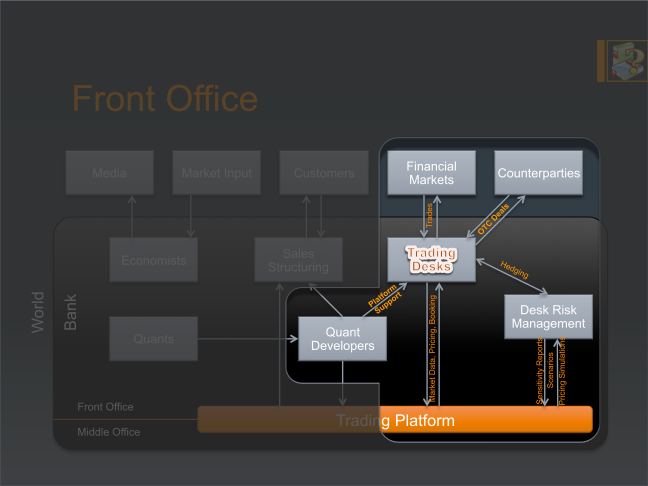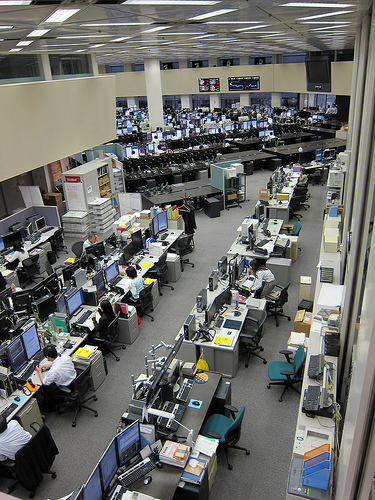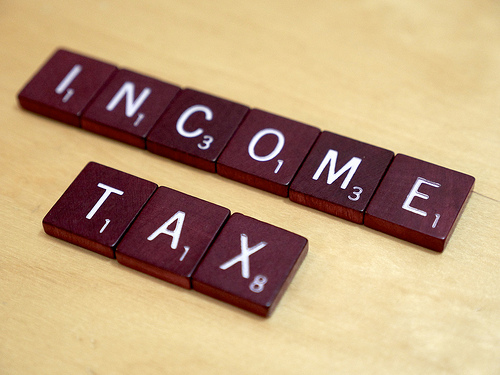- Off the Beaten Track
- Agendas
- Trading Platform
- Structure of a Bank
- Front Office
- Economists
- Sales and Structuring
- Trading Desks
- Quantitative Developers
- Middle Office
- Credit Risk Management
- Market Risk Management and Analytics
- Rates and Valuation
- Back Office, Finance et al
- Summary – Structure of a Bank
At the heart of Front Office are the trading desks. In terms of prestige and power, they really are the reason for the whole infrastructure of Front Office, including economists, sales, structuring, quants, quantitative developers etc. After all, they make the profits. And consequently, the vocal and volatile traders hold enormous sway. At their beck and call, quantitative developers provide instant service on trading platform issues; quants develop pricing models based on their requirements.

Trading desks interact with the external world of brokers and counterparties. They take their input on market moves from highly responsive market data providers and base their positional views on staff economists. They have an army of trading assistants (junior traders themselves) who help them book and monitor their trades with the help of risk management professionals associated with the desks.
Their interaction with the rest of the bank is mainly mediated by the trading platform. When the book a trade, for instance, it goes into the trading platform and ends up with some middle office professional who will decide whether to accept it or bounce it back for further modifications. Various risk management staff from the middle office also will take a hard look at the trade, as we shall see later in the trade lifecycle.
The desk risk management team get their cues also from the Middle Office risk management, in terms of approved limits and daily marked-to-market and sensitivity reports. All these channels of communication need to be facilitated in the trading platform.

